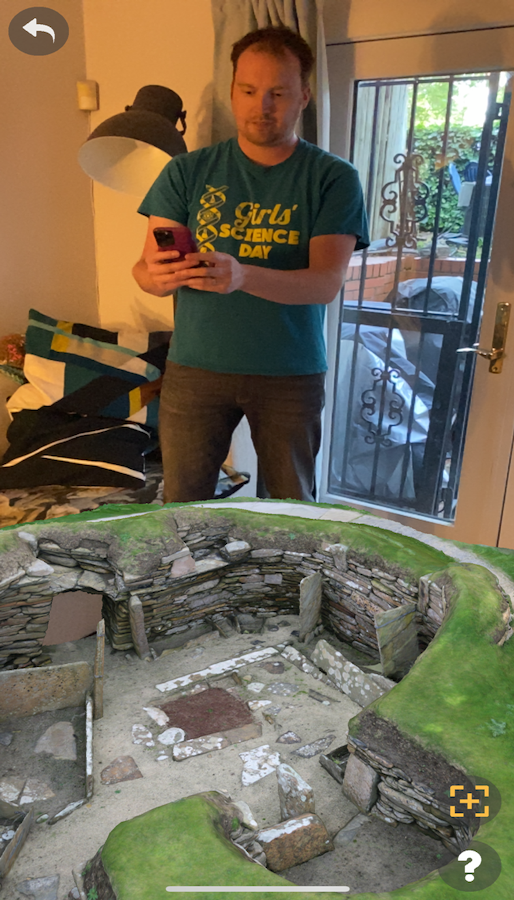The Fossett Lab’s augmented reality app, GeoXplorer, allows instructors across Arts & Sciences to create custom 3D modules for engaging remote coursework.

With remote learning predicted to continue in some fashion throughout the upcoming school year, instructors across Arts & Sciences are looking for new and engaging ways to deliver course materials. The Fossett Laboratory for Virtual Planetary Exploration is ready to answer this call by expanding its offerings beyond Earth and planetary sciences into such diverse areas as art history, archeology, and brain anatomy.
The Fossett Lab recently released its augmented reality app, GeoXplorer, for iOS and Android mobile devices, making it widely accessible to students wherever they might be. GeoXplorer allows users to view and explore 3D objects remotely. Though the app was created to help students understand the complex nature of geologic structures and planetary surfaces, any object that can be rendered in 3D can be added to GeoXplorer for remote viewing in augmented reality (AR). Unlike fully immersive virtual reality (VR), AR overlays virtual objects onto real-world space when viewed through an AR application or device, which users often find more comfortable and intuitive.
“Faculty might be surprised to know that thousands of 3D digital objects already exist on sites like Sketchfab, and are free to download and incorporate into our AR app. Many are uploaded by libraries, museums, or other trustworthy sources,” said Philip Skemer, director of Fossett Lab and associate professor of Earth and planetary sciences.

Skemer added that the effort required of instructors to create new 3D digital objects is minimal. “At the Fossett Lab, we have a setup for doing photogrammetry, which is the technique for taking many 2D photos and stitching them into a 3D object,” he said. “We'll provide a tab, right in the app, for each course, so all the instructor has to do is direct the students to download the app, navigate to the course-specific tab, and everyone -- regardless of where they are physically situated -- will have all the course's 3D content at their fingertips.” No headset required; just a smartphone or tablet.

Given the availability of 3D models and the ease of creating new material, the potential applications for GeoXplorer extend to nearly any subject area, far beyond Earth and planetary sciences. Skemer and research scientist Martin Pratt anticipate applications of GeoXplorer in departments across Arts & Sciences. For example, art historians could examine fine details of buildings, sculptures, and other decorative arts; psychologists and brain scientists could interact with brain physiology and neural networks; and biologists and chemists could map crystal, molecule, and protein structures, in addition to larger cells and anatomies.
Instructors who would like to learn more about visualization development and curricular planning with GeoXplorer can contact Skemer directly. Skemer and his team will be working with faculty over the summer to help them launch engaging AR content in time for the fall semester.
Anyone interested in exploring the possibilities of GeoXplorer can download the app for use on their own devices.




